-
 Bitcoin
Bitcoin $108,338.0981
-0.13% -
 Ethereum
Ethereum $2,566.4077
1.16% -
 Tether USDt
Tether USDt $1.0001
-0.01% -
 XRP
XRP $2.2841
-2.59% -
 BNB
BNB $658.5241
-0.17% -
 Solana
Solana $150.3819
-1.08% -
 USDC
USDC $0.9999
-0.01% -
 TRON
TRON $0.2864
-0.24% -
 Dogecoin
Dogecoin $0.1694
0.24% -
 Cardano
Cardano $0.5813
-0.72% -
 Hyperliquid
Hyperliquid $37.8292
-4.60% -
 Bitcoin Cash
Bitcoin Cash $503.3593
1.69% -
 Sui
Sui $2.8784
-0.69% -
 Chainlink
Chainlink $13.4784
-0.43% -
 UNUS SED LEO
UNUS SED LEO $9.0793
-0.27% -
 Stellar
Stellar $0.2537
-0.41% -
 Avalanche
Avalanche $18.0047
-0.23% -
 Shiba Inu
Shiba Inu $0.0...01181
1.56% -
 Hedera
Hedera $0.1608
0.49% -
 Toncoin
Toncoin $2.7568
-0.93% -
 Litecoin
Litecoin $86.4121
-0.20% -
 Monero
Monero $313.7273
-0.86% -
 Polkadot
Polkadot $3.3715
-0.66% -
 Dai
Dai $1.0001
0.01% -
 Ethena USDe
Ethena USDe $1.0004
0.03% -
 Bitget Token
Bitget Token $4.2902
-0.54% -
 Uniswap
Uniswap $7.5361
2.73% -
 Aave
Aave $285.6090
-0.55% -
 Pepe
Pepe $0.0...09958
0.28% -
 Pi
Pi $0.4560
-0.65%
What are the Bybit API documentation and limits?
2025/07/09 04:15
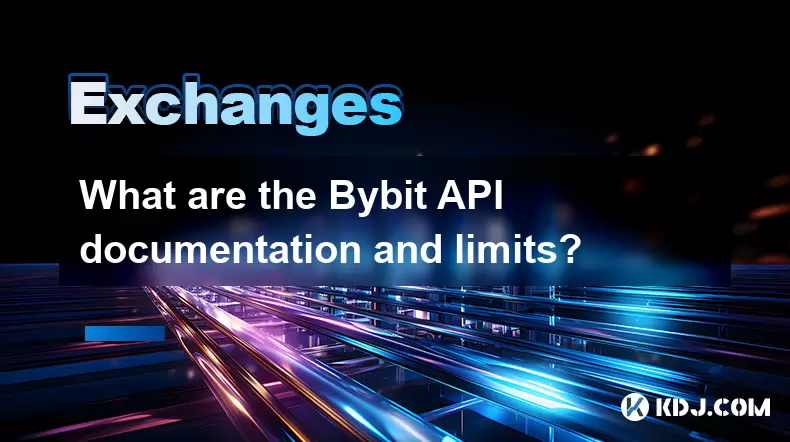
Understanding the Bybit API Documentation
The Bybit API documentation serves as a comprehensive guide for developers and traders who wish to interact with the Bybit exchange programmatically. It outlines all available endpoints, authentication methods, data formats, and response structures. The documentation is accessible directly from the Bybit official website under the API section. Key areas covered include:
- RESTful APIs: These allow users to retrieve market data, place trades, manage orders, and access account information.
- WebSocket APIs: Designed for real-time updates such as price feeds, order status changes, and trade executions.
- Authentication Procedures: Explains how to generate API keys, sign requests using HMAC-SHA256, and handle secure communication.
Each API endpoint includes detailed descriptions, request parameters, sample code snippets (in multiple languages), and expected response formats. This ensures that developers can integrate Bybit’s services into their trading bots or applications seamlessly.
Important Note: Always refer to the latest version of the Bybit API documentation to stay updated on any changes or deprecations.
Types of API Keys Available on Bybit
To access the Bybit API, users must first create one or more API keys through their Bybit account settings. Each API key has customizable permissions and security settings. The main types of API keys available are:
- Read-only API Key: Grants access to view-only operations such as fetching balances, order history, and market data.
- Trade API Key: Allows placing and canceling orders but does not permit withdrawal actions.
- Withdraw API Key: Provides full access including withdrawals, which should be handled with extreme caution.
When generating an API key, users can also set IP whitelisting to restrict API access to specific machines or servers. This enhances security by ensuring unauthorized systems cannot use the key even if it's compromised.
Rate Limits Imposed by Bybit API
Bybit imposes rate limits on its API endpoints to maintain system stability and ensure fair usage across all users. These limits vary depending on the type of API being used (REST or WebSocket) and the nature of the request. Some common rate limits include:
- REST API Requests: Typically capped at 60 requests per minute for public endpoints and higher limits for authenticated ones.
- Order Placement and Cancellation: Subject to stricter limits to prevent abuse and spamming.
- WebSocket Connections: Limited to a certain number of active connections per user, with message frequency restrictions in place.
Exceeding these limits may result in temporary bans or throttling of API access. Developers should implement proper error handling and rate-limit awareness in their applications to avoid disruptions.
How to Generate and Manage API Keys on Bybit
Creating and managing API keys on Bybit involves several steps:
- Log in to your Bybit account and navigate to the API Management section under the Account tab.
- Click on the “Create API” button to initiate the generation process.
- Select the appropriate permissions for the key: read-only, trade, or withdraw.
- Enable IP Whitelisting if required and input the allowed IPs.
- Confirm the creation via email or two-factor authentication (2FA).
- Store the generated API Key and Secret securely, preferably in an encrypted environment or secure vault.
Once created, you can edit or delete API keys anytime from the same interface. It’s advisable to rotate keys periodically and disable unused ones to reduce potential attack surfaces.
Troubleshooting Common API Errors on Bybit
Even experienced developers may encounter errors when working with the Bybit API. Some of the most common issues and their solutions include:
- Signature Verification Failed: Ensure the secret key is correctly formatted and that the timestamp used for signing is within the allowed window (typically 15 seconds).
- Request Timeout: Check network connectivity and adjust timeout thresholds in your client code.
- Invalid Parameters: Double-check parameter names and values against the API documentation.
- Rate Limit Exceeded: Implement exponential backoff strategies or reduce request frequency.
- Unauthorized Access: Verify that the API key has the correct permissions and that IP whitelisting isn’t blocking the request.
Bybit returns detailed error codes and messages with each failed request, making it easier to identify and resolve issues quickly.
Frequently Asked Questions (FAQs)
Q1: Can I use the same API key for both REST and WebSocket APIs?
Yes, the same API key can be used across both REST and WebSocket APIs, provided it has the necessary permissions. However, it’s recommended to use separate keys for different functionalities to enhance security and simplify management.
Q2: What happens if I lose my API secret key?
If you lose your API secret key, you will need to delete the corresponding API key from your Bybit account and generate a new one. The old key becomes permanently invalid once deleted.
Q3: Does Bybit support API testnet environments?
Yes, Bybit offers a testnet environment for developers to test their API integrations without risking real funds. The testnet mirrors the live API structure and behavior, allowing for thorough testing before deployment.
Q4: How often does Bybit update its API documentation?
Bybit regularly updates its API documentation to reflect new features, deprecated endpoints, and improvements. Users are encouraged to check for updates frequently or subscribe to Bybit’s developer announcements for timely notifications.
부인 성명:info@kdj.com
제공된 정보는 거래 조언이 아닙니다. kdj.com은 이 기사에 제공된 정보를 기반으로 이루어진 투자에 대해 어떠한 책임도 지지 않습니다. 암호화폐는 변동성이 매우 높으므로 철저한 조사 후 신중하게 투자하는 것이 좋습니다!
본 웹사이트에 사용된 내용이 귀하의 저작권을 침해한다고 판단되는 경우, 즉시 당사(info@kdj.com)로 연락주시면 즉시 삭제하도록 하겠습니다.
- Blockdag는 스포츠 거래로 큰 점수를 얻고 Toncoin Price는 높은 것을 목표로하고 Pepe는 꼬집음을 느낍니다.
- 2025-07-09 07:10:12
- 비트 코인, 폭스 비즈니스 및 부족 : 와일드 웨스트 골드 러쉬?
- 2025-07-09 06:50:12
- 암호화 강세 설정 : Ripple (XRP)은 대규모 랠리를 위해 준비됩니까?
- 2025-07-09 06:50:12
- 테더, 크리스탈 인텔리전스 및 안정적인 감독 : 새로운 투명성 시대?
- 2025-07-09 07:10:12
- Biosig, Gold Tokenization 및 Financing : 새로운 골드 러쉬?
- 2025-07-09 07:15:12
- 낙관론 가격 예측 : 낙관적 인 반등이 저항 할 수 있습니까?
- 2025-07-09 06:30:12
관련 지식
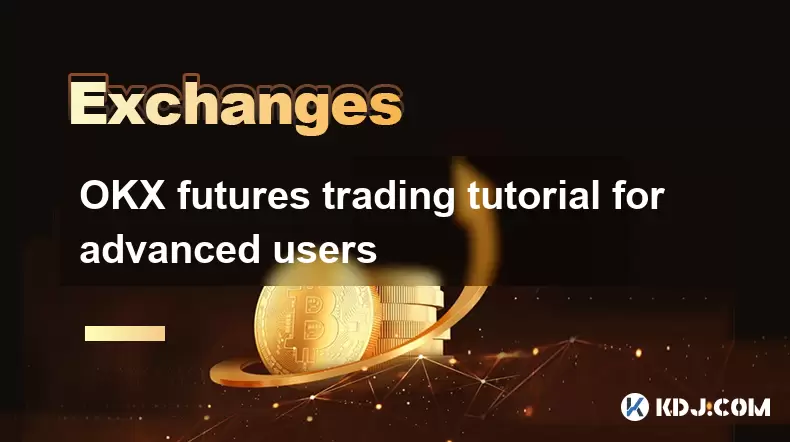
OKX futures trading tutorial for advanced users
2025-07-09 07:29:09
<h3>Understanding OKX Futures Trading Interface</h3><p>Before diving into advanced strategies, it's crucial to have a deep understan...
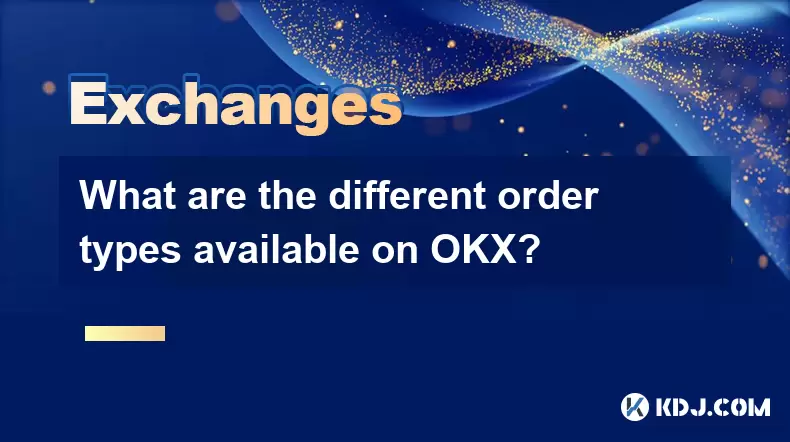
What are the different order types available on OKX?
2025-07-08 22:15:08
<h3>Understanding Order Types on OKX</h3><p>OKX is one of the leading cryptocurrency exchanges globally, offering a wide array of tr...
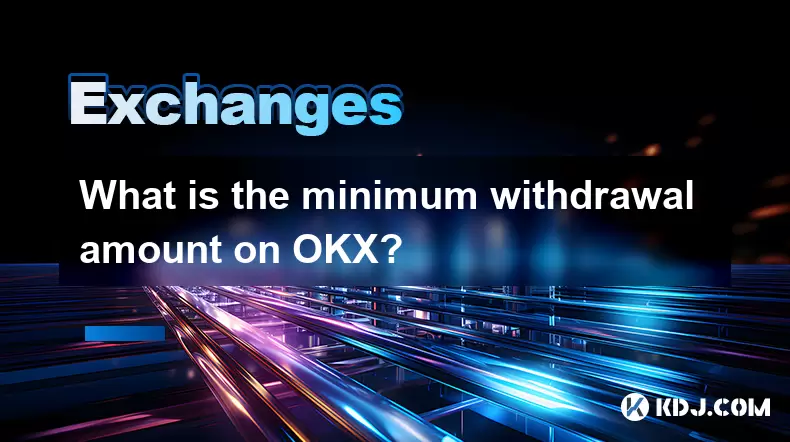
What is the minimum withdrawal amount on OKX?
2025-07-08 20:21:25
<h3>Understanding the Minimum Withdrawal Amount on OKX</h3><p>When using a cryptocurrency exchange like OKX, users often need to und...
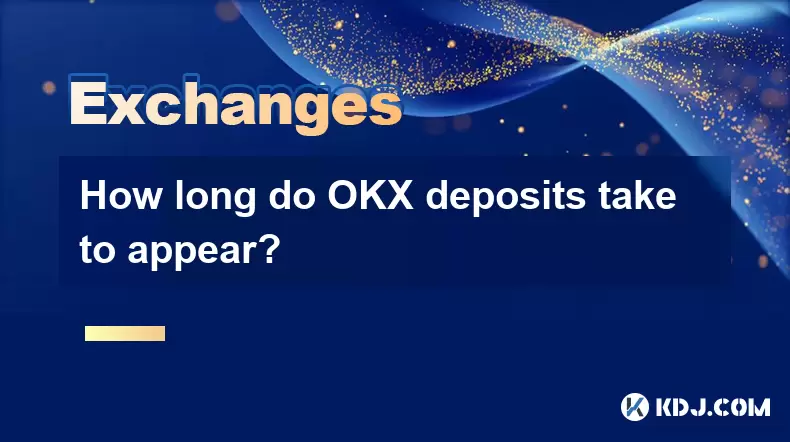
How long do OKX deposits take to appear?
2025-07-08 20:15:12
<h3>Understanding OKX Deposit Times for Cryptocurrencies</h3><p>When using OKX, one of the most common concerns among users is how l...
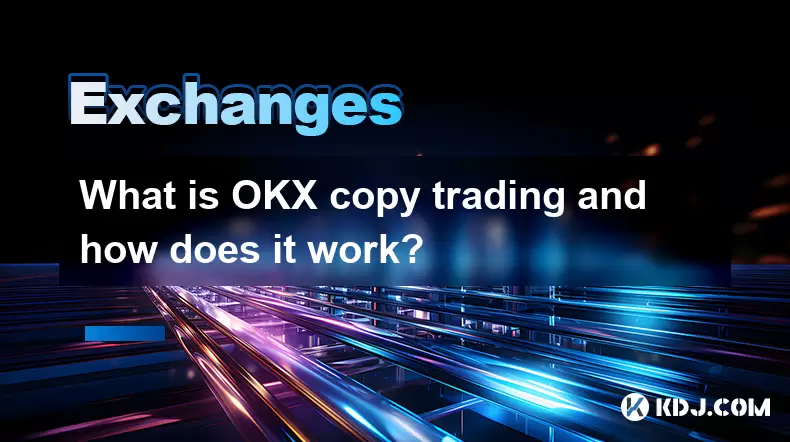
What is OKX copy trading and how does it work?
2025-07-09 06:00:32
<h3>Understanding OKX Copy Trading</h3><p>OKX copy trading is a feature offered by the OKX cryptocurrency exchange that allows users...
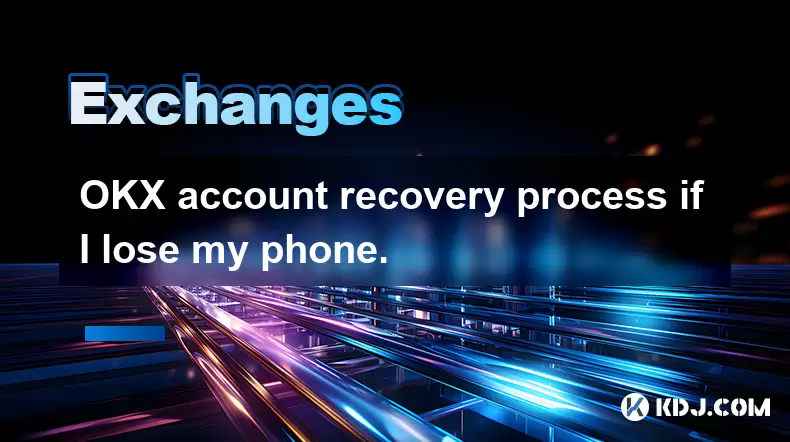
OKX account recovery process if I lose my phone.
2025-07-08 22:43:15
<h3>What Happens If I Lose My Phone and Need to Recover My OKX Account?</h3><p>Losing your phone can be a stressful experience, espe...

OKX futures trading tutorial for advanced users
2025-07-09 07:29:09
<h3>Understanding OKX Futures Trading Interface</h3><p>Before diving into advanced strategies, it's crucial to have a deep understan...

What are the different order types available on OKX?
2025-07-08 22:15:08
<h3>Understanding Order Types on OKX</h3><p>OKX is one of the leading cryptocurrency exchanges globally, offering a wide array of tr...

What is the minimum withdrawal amount on OKX?
2025-07-08 20:21:25
<h3>Understanding the Minimum Withdrawal Amount on OKX</h3><p>When using a cryptocurrency exchange like OKX, users often need to und...

How long do OKX deposits take to appear?
2025-07-08 20:15:12
<h3>Understanding OKX Deposit Times for Cryptocurrencies</h3><p>When using OKX, one of the most common concerns among users is how l...

What is OKX copy trading and how does it work?
2025-07-09 06:00:32
<h3>Understanding OKX Copy Trading</h3><p>OKX copy trading is a feature offered by the OKX cryptocurrency exchange that allows users...

OKX account recovery process if I lose my phone.
2025-07-08 22:43:15
<h3>What Happens If I Lose My Phone and Need to Recover My OKX Account?</h3><p>Losing your phone can be a stressful experience, espe...
모든 기사 보기

























































































